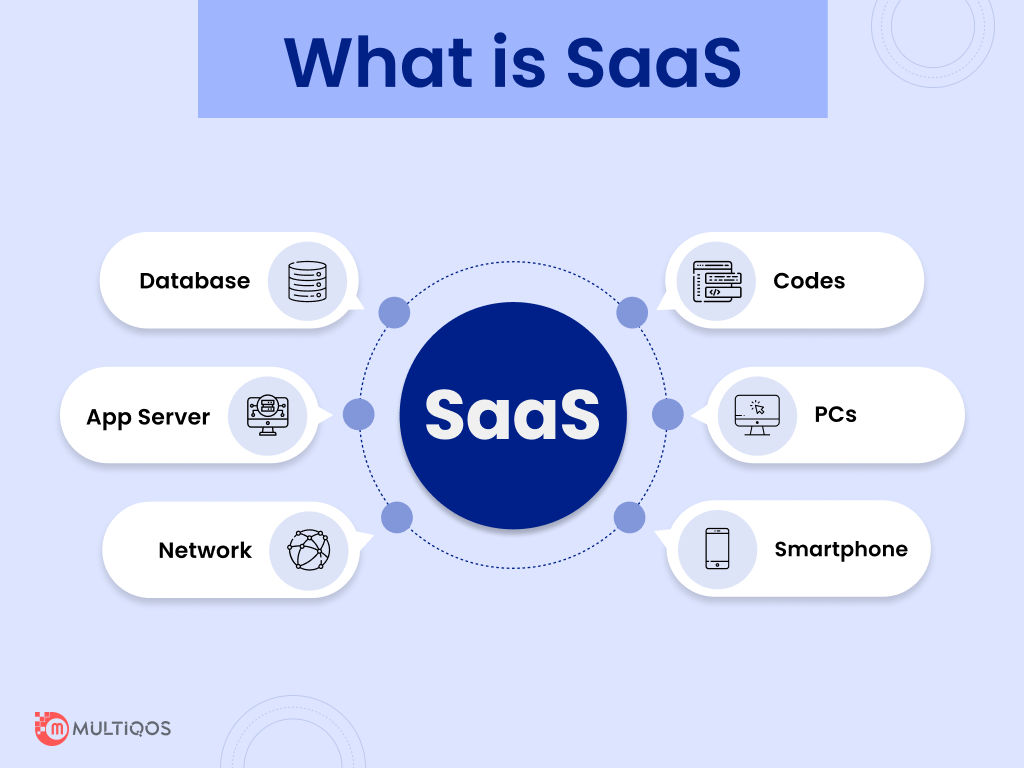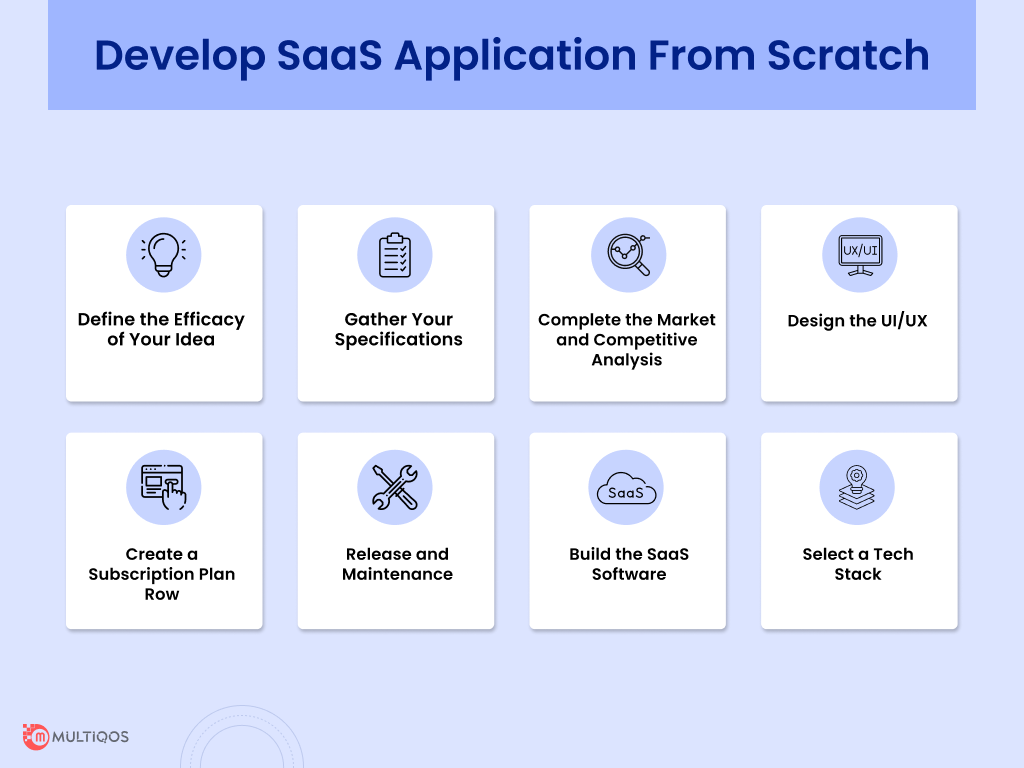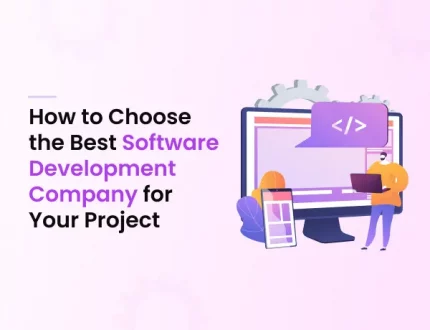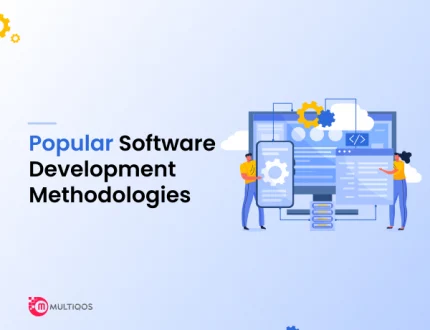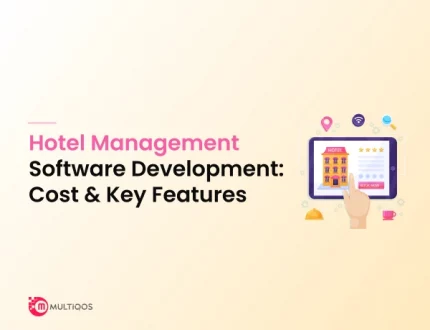A Complete Guide on SaaS App Development: Features & Benefits
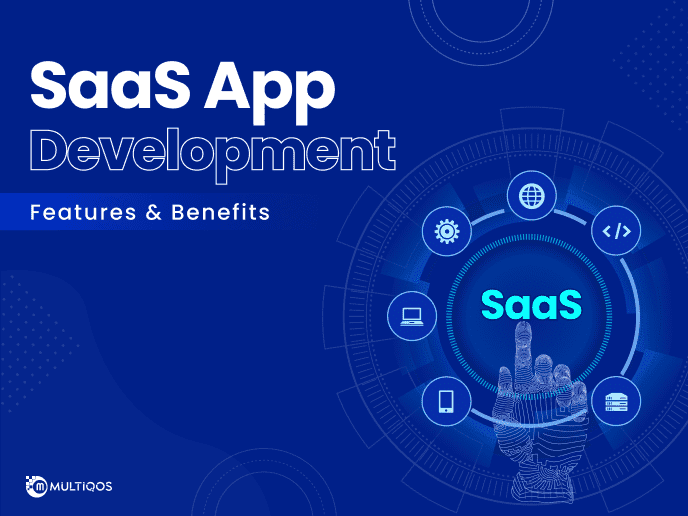
Table of Contents
- Overview
- What is SaaS?
- SaaS vs Traditional Software
- Mobile SaaS Apps: Market Overview
- Why SaaS Apps Drive Rapid Business Growth
- How To Develop A Saas Application From Scratch?
- SaaS App Development Tools and Technologies
- How Much Does it Cost to Build a SaaS Application?
- How to Choose a SaaS Development Company?
- Conclusion
- FAQ
Overview
Did you know – What do Dropbox, Hubspot, Trello, Spotify, Buffer, and Spotify have in common? They are all among the most well-known SaaS products over the last ten years.
These incredibly successful SaaS-based firms prove that the SaaS delivery paradigm is where technology is headed. And if you’re planning to launch your firm soon, you should think about SaaS because 110 SaaS apps were utilized on average in 2021. Not only that, but it is predicted that the SaaS industry would be worth $208 billion by 2023.
However, the concerns of how to create a SaaS application worry the next generation of entrepreneurs and co-founders. What should you remember? What measures should I take? These inquiries are addressed in this post as we go through the basics and intricacies of SaaS Application Development.
What is SaaS?
The software licensing and a delivery mechanism known as SaaS (Software as a Service) allow you to host the application on the cloud. Users may access the program on the internet from any location and in any time zone thanks to its subscription-based licensing.
Difference Between SaaS and Traditional Software
Here is a fast summary of what sets saas app development apart from traditional:
- A conventional software application is saved on the dedicated servers and hardware of the client or user, whereas SaaS is hosted in the cloud.
- The SaaS is “rented” by businesses and other customers, who pay subscription fees for as long and as much time as they like. A user’s intangible asset, however, is legally obtained software. It is often bought with an upfront cost.
- A SaaS may be as extensive in scope and functionality as required by the user experience because there are no storage space restrictions. Other applications and apps don’t have this problem since they take the device’s RAM into account.
The Rise of Mobile SaaS Applications: Market Overview
Over time, more and more sectors are embracing the SaaS model. Let us have a look:
- Nearly 20% of all corporate R&D investment in the US is spent on SaaS research and development globally.
- Leading regions for SaaS adoption include the Asia Pacific and North America.
- The most valuable SaaS business is Salesforce, which has a market capitalization of more than US $210 billion.
- In 2020, there were 15,529 active companies in the market for SaaS providers worldwide.
- From 2020 to 2026, the market for web-based solutions is expected to expand at a CAGR of 11.7 percent.
The key drivers behind the adoption of SaaS product development are organizations’ efforts to stay up with the digital revolution. Businesses are also finding it to be quite advantageous.
Reasons Why is SaaS App the Key to Rapid Business Growth?
As you are aware, there are several benefits to using specialized SaaS solutions for enterprises. Here are a few advantages of creating a SaaS application for your company:
-
Continuous Accessibility:
The SaaS CRM is especially helpful for salespeople who spend the majority of their time on the road because the apps are housed in the cloud. People are more inclined to value software that allows them to utilize it right away and does not need them to waste hours on installation procedures. Naturally, the app’s utilization rate increases and the business benefits from this.
-
Easy Customization:
Users of SaaS CRM apps may now interface with the already-available software available in the market and grow their CRM solution just as an onsite client would since technology has advanced over the years. Because of this, you may keep working as usual without worrying about a technical conflict.
-
Improved Security:
Since the upkeep of the data that a client entrusts to a SaaS company is their responsibility. The importance of security is becoming evident, and client data is handled with care. Customers and consumers are more likely to employ SaaS programs after seeing how effective their security claims are.
-
Market Reach:
No matter the industry or size of the company, SaaS apps are available to all users and businesses. The major ones are G Suite, Dropbox, and Adobe services; they don’t focus on any one market because everyone is using them now.
How To Develop A Saas Application From Scratch?
We’ll walk you through the SaaS development process in the section below:
Step 1: Study and Produce App Technical Specifications
Right now, your objective should be to gather as much data as you can about your potential consumers, rivals, trends, and upcoming technology. You may create a really distinctive SaaS solution by combining insights into consumer demands with knowledge about the drawbacks of rivals’ apps. If you’re thinking about establishing vertical SaaS business apps, research the trends that are emerging in the sector you’ll be targeting.
You will produce a comprehensive and complete document at the conclusion of the first stage of the app development process that contains the guidelines for product development as well as the functional and non-functional specifications for your app. It might be the first phase of the development of your SaaS MVP.
Step 2: Define Revenue Streams
How precisely do you plan to profit from your SaaS product? You must have an answer to this before starting a large-scale software development project. This is one of the most important aspects of developing SaaS apps since it will set the architecture of your software product, which cannot be readily changed.
Ads, subscriptions, and freemium models are the three most common methods to make money. Consider adding transaction and/or selling fees if you’re creating a cloud-based marketplace.
Step 3: Pick a Cloud Infrastructure Provider
You must choose a reliable cloud infrastructure provider if you want to serve many consumers while protecting their data. Choose recognized and tested providers who can keep up the strongest encryption and data center. Your SaaS platform will operate on, so pick a cloud service provider that can enable third-party integrations while delivering a high degree of scalability, dependability, and performance.
Step 4: Develop an MVP
This isn’t yet a fully functional cloud-based solution. A trial application version known as a Minimum Viable Product (MVP) has the very minimum set of features. Planning is necessary, nevertheless, in order to choose the features that will be part of your MVP. Use the features that have the biggest impact while costing the least money. Right now, you want to persuade your investors.
Step 5: Test and Implement Changes
After an MVP has been released, get feedback. Asking customers directly about their likes and dislikes of your product is the greatest approach to find out. Making adjustments to an app’s core functionality or architecture at this stage won’t be as difficult or time-consuming as it would be later. Your app’s proof-of-concept testing target audience may subsequently grow to include early adopters.
Step 6: Development of the Final Product to Begin
During this stage, your app development team will begin writing code using the tools, SaaS development framework, and programming language of their choice. Scrum, Kanban, or Extreme Programming are examples of agile approaches. It can be used to simplify and speed up development while maintaining adherence to specification requirements and assuring quality.
The best practices of today advise including QA testing in each phase of software development. Additionally, keep in touch with your development team while you install your SaaS. Your objective is to continuously assess if you are on the same page and are accurately adhering to product standards.
Step 7: Release and Maintenance
Once all QA testing has been completed, your SaaS platform or online service is ready for release. User acceptance testing, the last step in the quality assurance process, will happen after you publish your app, so you’re not finished with QA just yet.
Your SaaS developers will be required to offer continuous support and application updates following the final release. If problems emerge, your users ought to be able to quickly contact tech assistance.
What Are The Prime Tools And Technologies Used For SaaS App Development?
The development of features is one of the two main facets of SaaS product development. The maintenance of databases and technological administration are additional. Here is the list of saas development tools and technologies that are commonly used:
Basic Application Framework:
- Front-end Development: HTML + CSS or JavaScript’s front-end frameworks like React, Vue.js and Angular
- Back-end Development: JavaScript, Python
Database and Cloud Services:
- MySQL
- MongoDB
Cloud Computing Services
- Amazon Web Services (AWS)
- Queuing system (Rabbit MQ)
How Much Does it Cost to Build a SaaS Application?
Costs are associated with software development, and creating cloud-based platforms and services is no exception. Take into account the SaaS app’s sophistication and the pay rates of your SaaS developers to determine a precise cost estimate.
Simply said, adding features will take longer to deploy the more capabilities your product has. Developers will need to set aside about 2600 hours of effort, encompassing iOS, Android, and UI/UX development, to create apps as complicated as Slack. As a result, the development period may go over a year.
According to data from sites like Clutch or GoodFirms, the typical hourly pay for development work ranges from $50 to $120. This in turn affects the overall development cost of software similar to Slack: $130,000- $312,000.
Also Read: How Much Does it Cost to Build a CRM System?
How to Choose a SaaS Development Company?
SaaS application development is growing, thus any delays in the creation of your software will just result in additional rivals. Therefore, it is preferable to use a reputable mobile application development company like MultiQoS.
Hiring an agency that is aware of the level of maturity required by the current market requirements for your application can be quite beneficial. You may get in touch with our SaaS specialists, who have built a large number of successful apps that are helping our clients succeed.
Conclusion
Considering the popularity this particular concept is gaining, creating a SaaS application is a really promising idea for 2024 and the years to follow. You can refer to this guide whenever you get stuck if you’re unsure whether to enter the SaaS industry.
Additionally, we would be honored to support you in your endeavor by providing SaaS app development services. If you want to describe how successful you were working with us, we are prepared to do so.
Have a SaaS App Project for Us?
Let's develop your next SaaS product! Request a free consultation.
FAQ on SaaS App Development
The provider must first have a track record of success developing SaaS applications. See whether what they can achieve is similar to what you have in mind by looking at their case studies and portfolio. You can check out customer endorsements and reviews on websites like Clutch and Goodfirsms. This can help you have a better picture of what it’s truly like to work with them.
From the first phases of planning through product launch, it may take 2 to 10 months. However, this is dependent on a variety of variables, like your app’s complexity, size, tech stack, and the amount of engineers on your team.
Depending on where your team is located, a SaaS application might cost different amounts. Recruiting from the US, for instance, may cost you $120,000 per app, but shifting the SaaS development process to Eastern Europe might result in expenses as low as $35,000.
Get In Touch

